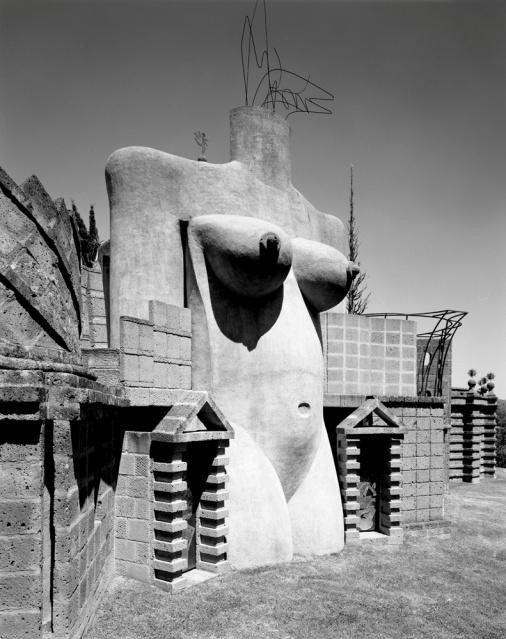Fig.
1 - The Great Mother (Photography by Matteo Benedetti, 2012).

Fig.
2 - General plan of the Scarzuola (Froio, 2012).

Fig.
3 - The detail of steps from Teatrum Mundi (Photography by Matteo Benedetti, 2012).

Narrative and autobiographical architecture
The concept of narrative architecture describes a set of theoretical reflections widely debated over the past decades, in a dense thematic reference between literature, art, cinema, architecture, urban planning. So we can make the difference between analyzes and narrations. While analysis have a scientific character, using models based on the description of data and quantitative testing, etc., architectural and urban narratives have an imaginative character that brings them back to the sphere of the story. In this way they imply a collective operation that aims indirectly to create a real epos (Purini 2007) [4].BISI L. (1986) –
“Tomaso Buzzi: sogni di pietra”. Eupalino, II,
6
BARTHES R. (1953) – Le
degré zéro de l’écriture
suivi de Nouveaux essais critiques, Éditions du
Seuil.
BARTHES R. (1977) – Fragments
d' un discours amorureux, Éditions du Seuil.
CASSANI A. (2004) – “L'autobiografia in pietra di
Tomaso Buzzi”. Casabella, 723 (maggio).
CASSANI A. (2008) – Tomaso
Buzzi. Il principe degli architetti. 1900-1980, Electa,
Milano.
DARDI C. (2009) – Architetture
in forma di parole, Quodlibet, Macerata.
JENCKS C. (1984) – The
language of Post-modern architecture, Academy Editions,
London.
FAGIOLO M. (2006) – Architettura
e massoneria. L'esoterismo della costruzione, Gangemi,
Roma.
FENZI E. (2000) – Tomaso
Buzzi. Lettere pensieri appunti. 1937-1979, Silvana
Editoriale, Cisinello Balsamo.
LYOTARD J.-F. (1979) – La
condition postmoderne, Les Edition de Minuit, Paris
MALFONA L. (2012) – Il
tracciato urbano. Logiche insediative e implicazioni architettoniche,
Melfi.
NERI G. e ZOFFOLI P. (1992) – L’architettura
dell’immateriale, Clear, Roma.
PURINI F. (1984) – “Narrazioni urbane”.
Parametro, 268 (marzo-aprile).
PURINI F. (1992) – Dal
Progetto. Scritti teorici di Franco Purini, Kappa, Roma.
PURINI F. (2008) – Attualità
di Giovanni Battista Piranesi, Librìa, Melfi.
ROCCA E. (2008) – Estetica
e architettura, Il Mulino, Bologna.
SEMERANI L. (1991) – Passaggio
a nord-est, Electa, Milano.
UNGERS O. M. (1979) “L'architettura della memoria
collettiva”. Lotus International, 24
VATTIMO G. (2002) – Tecnica
ed esistenza. Una mappa filosofica del Novecento,
Mondadori, Milano.